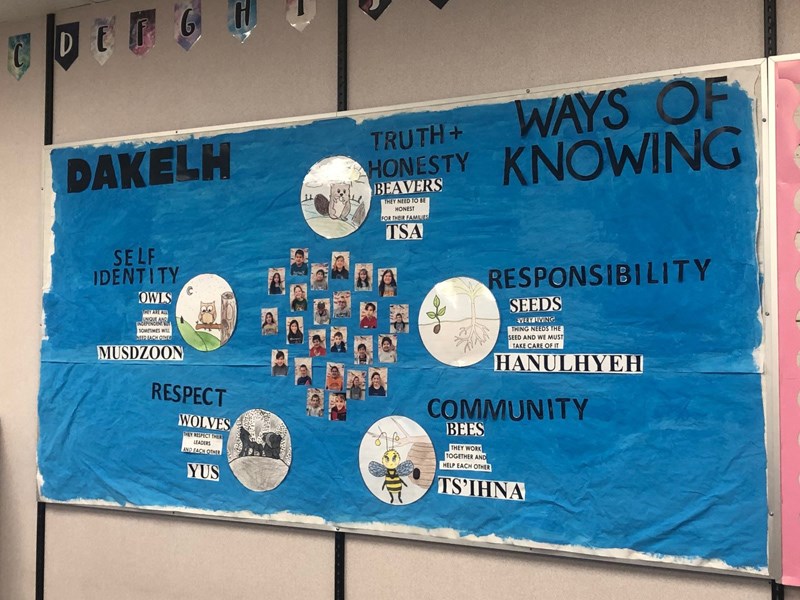Dakelh words may seem hard to pronounce for two reasons. One is spelling. If you aren't familiar with the language and its writing system, you don't know what sounds the letters spell. Our experience of English makes us think that the pronunciation of words of other languages may have to be learned word by word. Fortunately, reading and writing Dakelh is much easier than English. English has many sounds that are written more than one way, letters that can be pronounced more than one way, and silent letters. Dakelh does not. Once you know the system, you can almost always pronounce words you have never seen before correctly.
The other difficulty is that Dakelh has some sounds that English does not. The largest group of unfamiliar sounds are what linguists call ejectives or glottalized consonants. All of the speech sounds of English are made using air pressure from the lungs. When we make a /t/, for example, we press the tip of the tongue against the alveolar ridge, the bony ridge in back of the upper teeth. This closes the front of the mouth. Then we build up pressure behind this closure with our lungs. When we pull the tongue back down, away from the alveolar ridge, the air rushes out. Sounds in which the air pressure originates from the lungs are called pulmonic.
To make the ejective counterpart, /t'/, we do the same thing with the tongue, but we also press our vocal chords together, closing the windpipe at the level of the Adam's Apple. The windpipe, back of the throat, and mouth now form a closed, bent, tube. If we raise our larynx about a centimetre, we raise the pressure in trapped air. If we now pull the tongue away from the alveolar ridge, the air rushes out, making a sound similar to an English /t/, but with more of a cracking or popping sound. Dakelh has a whole set of such glottalized sounds, written with an apostrophe following the letters for the pulmonic versions. Once you are aware of them and have listened to some examples, it isn't hard to learn to make them and distinguish them from their pulmonic counterparts.
Perhaps the most unfamiliar sound is the one written “lh”, as in “Lheidli”. It is made much like an English /l/, but without vibration of the vocal chords, and with more turbulent flow of air. It sounds somewhat like the “th”of “thin” followed by an “l.” One European language has this sound: it is the sound written “ll” in Welsh. The reason that English has two versions of the same name, “Lloyd” and “Floyd”, is that English speakers did not know quite what to make of this Welsh sound.
The un-English sounds of Dakelh are found in most of the other aboriginal languages of our province as well as in languages from other parts of the world. For children to become familiar with a larger part of our human speech capacity will give them a leg up in dealing with languages in later life.
Here is a list of the many resources available for learning about Dakelh. There is also a clickable alphabet chart for the Lheidli dialect and a Lheidli dictionary that comes with many entries in audio.
Bill Poser is a Prince George writer, a research consultant for the Yinka Dene Language Institute and the author of Carrier Language: A Brief Introduction.



